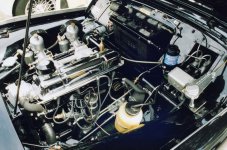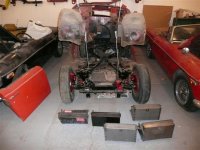Hi guys - hope everyone is having a good weekend so far.
So flush with enthusiasm from the TR6 wiring progress (electrical had been a big stumbling point for me) I decided I really needed to learn how to use the MIG welder I bought. So a couple of hours of instruction later I'm ready for to get going on the TR4 battery box.
Dale - I know you wrote up your experiences about making a replacement shelf.
Anyone have experience fitting one of the replacement boxes
from the Big 3? Are TRF's actually better than those from Moss?
Is the 'uppers' are OK and it is just the floor that is gone would you use one of the Big 3 boxes still or just fabricate the bottom?
What do you think guys?
So flush with enthusiasm from the TR6 wiring progress (electrical had been a big stumbling point for me) I decided I really needed to learn how to use the MIG welder I bought. So a couple of hours of instruction later I'm ready for to get going on the TR4 battery box.
Dale - I know you wrote up your experiences about making a replacement shelf.
Anyone have experience fitting one of the replacement boxes
from the Big 3? Are TRF's actually better than those from Moss?
Is the 'uppers' are OK and it is just the floor that is gone would you use one of the Big 3 boxes still or just fabricate the bottom?
What do you think guys?

 Hi Guest!
Hi Guest!

 smilie in place of the real @
smilie in place of the real @
 Pretty Please - add it to our Events forum(s) and add to the calendar! >>
Pretty Please - add it to our Events forum(s) and add to the calendar! >> 


